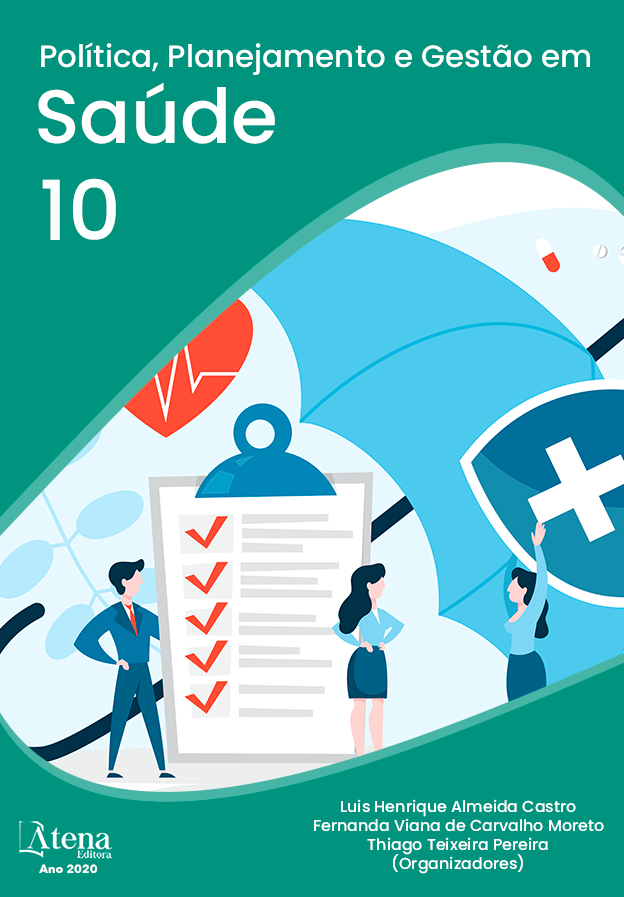
PRÁTICAS EDUCACIONAIS COMO ESTRATÉGIA DE EDUCAÇÃO EM SAÚDE SOBRE IST’s: VIVÊNCIA COM ADOLESCENTES EM ESPAÇO ESCOLAR
Introdução: A realização de práticas educativas em saúde voltadas para o público juvenil são essenciais, pois estimula-os a adquirirem comportamentos saudáveis através do aprendizado (SILVA; CARREIRO; MELLO, 2017). Essas atividades nas escolas públicas e particulares auxiliam os jovens a constitui mais conhecimento, informação, um pensamento crítico e reflexivo sobre a vulnerabilidade frente as Infecções Sexualmente Transmissíveis (IST’s) (QUEIROZ et al., 2016). Objetivos: Relatar a experiência dos acadêmicos na utilização de práticas educacionais como estratégia de educação em saúde. Metodologia: Relato de experiência, vivenciado por acadêmicos de enfermagem do 5º e 6º semestre, realizado no período de outubro de 2018, em uma escola pública no município de Belém-PA. Resultados: Durante a atividade na escola foi realizada uma oficina “Quem Vê Aparência, Não Vê IST’s”, no qual utilizou-se duas práticas educacionais, dentre elas: a roda de conversa, no qual foi explanado e dialogado algumas IST’s como: HVI, sífilis, gonorreia, herpes e HPV, sendo utilizados como recurso didático mapas mentais e imagens ilustrativas. Após a apresentação realizou-se a segunda prática, que foi uma dinâmica chamada o Contágio Invisível. Nessa atividade foram entregues para discentes copos contendo água, porém dentre os copos havia dois copos com uma solução específica chamada amoníaco. Ao som de uma música animada, os alunos foram convidados a dançar e a compartilhar sua solução durante a dança com os seus colegas, a qual tinha afinidade. Após o compatilhamento foi adicionado nos copos uma outra substância chamada Fenolftaleína. Logo em seguida os alunos puderam observar, que alguns copos começaram a mostrar uma coloração rosácea caracterizando uma contaminação por IST’s, entretanto os que não apresentaram a coloração não foram contaminados. A dinâmica teve como objetivo despertar aos alunos que a transmissão das IST’s mostram invisíveis para o indivíduo, não sabendo quem é portador dessas infecções, sendo assim a importância do uso contínuo de preservativos durante a relação sexual com seus parceiros. Conclusão: O uso de práticas educacionais no ambiente escolar são ferramentas eficazes no processo de ensino e promoção em saúde. Por tanto, é necessário que as instituições de ensino criem mais espaços e escuta para que haja um acolhimento e vínculo dos profissionais de enfermagem com adolescentes e jovens.
PRÁTICAS EDUCACIONAIS COMO ESTRATÉGIA DE EDUCAÇÃO EM SAÚDE SOBRE IST’s: VIVÊNCIA COM ADOLESCENTES EM ESPAÇO ESCOLAR
-
DOI: 10.22533/at.ed.9682022088
-
Palavras-chave: Enfermagem; Infecções Sexualmente Transmissíveis; Práticas Educacionais.
-
Keywords: Nursing; Sexually Transmitted Infections; Educational Practices.
-
Abstract:
Introduction: The carrying out of educational health practices aimed at the youth audience is essential, as it encourages them to acquire healthy behaviors through learning (SILVA; CARREIRO; MELLO, 2017). These activities in public and private schools help young people to build more knowledge, information, critical and reflective thinking about vulnerability to Sexually Transmitted Infections (STIs) (QUEIROZ et al., 2016). Objectives: To report the experience of academics in the use of educational practices as a health education strategy. Methodology: Experience report, experienced by nursing students in the 5th and 6th semesters, held in the period of October 2018, in a public school in the city of Belem-PA. Results: During the activity at the school, a workshop was held “Who Sees Appearance, Doesn't See STIs”, in which two educational practices were used, among them: the conversation wheel, in which some STIs were explained and discussed, such as: HVI, syphilis, gonorrhea, herpes and HPV, mental maps and illustrative images being used as a teaching resource. After the presentation, the second practice took place, which was a dynamic called the Invisible Contagion. In this activity students were given glasses containing water, but among the glasses there were two glasses with a specific solution called ammonia. To the sound of lively music, the students were invited to dance and share their solution during the dance with their colleagues, who had an affinity. After sharing, another substance called phenolphthalein was added to the glasses. Soon after, the students could observe that some glasses started to show a rosy color characterizing contamination by STIs, however those that did not show the color were not contaminated. The dynamics aimed to awaken to the students that the transmission of STIs is invisible to the individual, not knowing who has these infections, thus the importance of the continuous use of condoms during sexual intercourse with their partners. Conclusion: The use of educational practices at the school are effective resources in the teaching and health promotion process. Therefore, it’s necessary that educational institutions create more spaces and listen, so that nursing professionals are welcomed and connected with adolescents and young people.
-
Número de páginas: 1
- GABRIELA NUNES PINHEIRO
- ANA CAROLINE OLIVEIRA ALMEIDA
- ALEANDRA GUIMARÃES PINTO
- SAMUEL OLIVEIRA DA VERA
- LUZIANA BARROS CORREIA
- SIVALDO OLIVEIRA DA SILVA JÚNIOR
- SUSI DOS SANTOS BARRETO DE SOUZA
- Andrea da Silva Pereira Amaral


